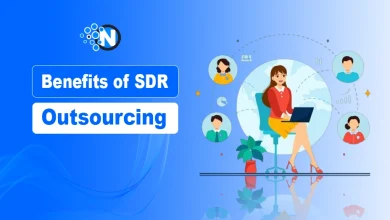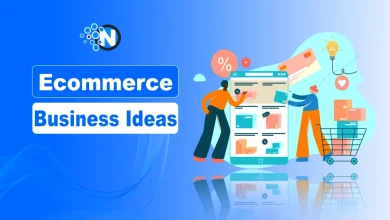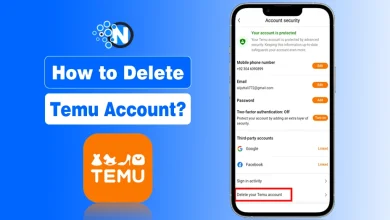Email Marketing has become one of the most promising Digital Marketing strategies. Up to 361.6 billion emails are sent every day, and this suggests that our inboxes are busy with all sorts of emails including business promotions. It explains how important sending email newsletters is important for increasing eCommerce sales. This technique brings promising results but you have to apply it in a certain way.
There are several newsletter actions that can be performed in order to boost eCommerce sales. In this article, I am going to discuss 4 of these actions in detail. Let’s start.
4 Newsletter Actions For Boosting eCommerce Sales:

Next in this guide, I am sharing four must-do newsletter actions that can skyrocket your sales.
1. Have an Audience and a Purpose in Mind:
To grow e-commerce sales with an email newsletter, you must begin by understanding your email marketing purpose and target audience. A compelling message is best shared when the sender understands the reader enough to provide insights for them to move along the buying cycle.
An e-commerce email newsletter is based on offering information with the intention of making the user a promising lead. When the letter is written keeping the audience’s mentality in mind, it has a better chance of having an impact.
i) How to Define Your Audience:
- Demographics: Age, gender, location, income.
- Behavior: Purchase history, browsing habits, engagement level.
- Interests: Product preferences or categories they’ve interacted with.
ii) Setting a Purpose:
Determine what you want readers to do after opening your email. This could be:
- Increasing Sales: Promote new arrivals, discounts, or bestsellers.
- Building Loyalty: Share stories, customer testimonials, or brand updates.
- Educating Customers: Offer tips, guides, or product tutorials.
For example, if your audience is new customers, your newsletter should focus on product education. If they’re repeat buyers, highlight loyalty rewards or new product launches.
2. Use Strong and Meaningful Storytelling:
The main purpose of writing and sending newsletter emails to an audience is to persuade them to become a permanent customer. However, lead generation through newsletters doesn’t happen quickly. You have to walk the reader through a proper process related to your brand. The best way to do so is by using the storytelling technique.
It involves sharing information in an engaging way that hooks the readers. It helps the audience get attached to the brand emotionally. When the audience is attached to the brand emotionally, they’re more likely to turn into leads and then ultimately into permanent customers.
Best Visual Practices:
- White Space: Use spacing effectively to avoid a cluttered look.
- Hero Image: Use a large, eye-catching image that highlights your main offer.
- Product Photos: Showcase products with clear, professional photos.
- Brand Colors and Fonts: Keep your design consistent with your brand identity.
What to Avoid?
- Overloading the email with too many visuals.
- Using low-quality or unrelated images.
If you’re promoting a holiday sale, use festive banners, product images with holiday-themed props, and cheerful colors like red, green, or gold.
3. Include a Welcoming and Obvious CTA
When you send email newsletters to subscribers, it’s because you want them to take a particular action. So, a simple principle to boost the performance of our e-commerce email newsletter is making it obvious by including visible and compelling calls to action (CTAs).
Whether you want the audience to buy a flash sale product or refer our e-commerce to a friend for a discount, minimize the effort of figuring out how it should proceed and make it visually compelling for them to follow the desired course of action.
This step is particularly important because as humans, we constantly try to save energy and time by rapidly looking for patterns and concepts that catch our eye. If the CTA isn’t very visible and obvious, the reader is going to overlook it. As a result, you will not get as many conversions as you need. So, follow these points in order to utilize this action better:
- Keep the CTA relevant to the email.
- Add clear and short wording.
- Position it prominently at a convenient place.
Key Elements of an Effective CTA:
- Action-Oriented Text: Use verbs like “Shop Now,” “Get 20% Off,” “Discover More,” or “Sign Up Today.”
Design and Placement:
- Make the button large, bold, and in a contrasting color.
- Place the CTA where readers can easily see it – above the fold and at the end.
How to Personalize CTAs?
- Use the customer’s name or past purchase data: “Sarah, Your Favorites Are Back!”
- Add urgency: “Limited Stock – Shop Before It’s Gone!”
A fitness brand running a promotion can use a CTA like “Start Your Fitness Journey Today” paired with a bright, clickable button in an energizing color like orange.
4. Curate Segments of Subscribers
Creating and maintaining segments of recipients of the e-commerce newsletter is another high-priority task. Segmenting the newsletter campaigns alone can result in lower bounce rates and unsubscribes, and increased open rates and click-throughs.
Do You Know?
Not all customers are the same. If you send the same email to everyone, it might not interest large portions of your audience. Segmentation ensures that subscribers receive content as per their preferences, increasing open rates, click-through rates, and ultimately, sales.
Segmentation involves careful and continuous monitoring of the email lists and the use of automation to reactivate or filter inactive subscribers. It increases the deliverability of the email newsletter and engages better with active subscribers.
Segmentation Strategies:
The top segmentation strategies for the businesses are given below in details to adopt in the eCommerce newsletters for better sales.
- Behavior-Based Segmentation: Group customers by purchase history, browsing patterns, and engagement.
- Demographic Segmentation: Use age, gender, or location data.
- Engagement Segmentation: Target active vs. inactive subscribers.
- Purchase Frequency: Reward loyal buyers with exclusive deals.
Wrapping up
With a $42-to-$1 return on investment, email marketing in e-commerce is fundamentally a must-have. That’s why, when designing your first or next email newsletter, remember that every message should be driven by a purpose and value to a specific audience.
A newsletter is optimal for enhancing the customer experience with our e-commerce website, so making it easy for the subscriber to navigate and act on it is essential. Relevancy, urgency, and segmentation of subscribers are significant elements to the success of an email newsletter for e-commerce




